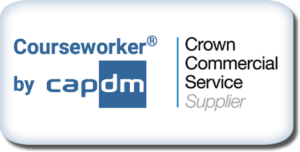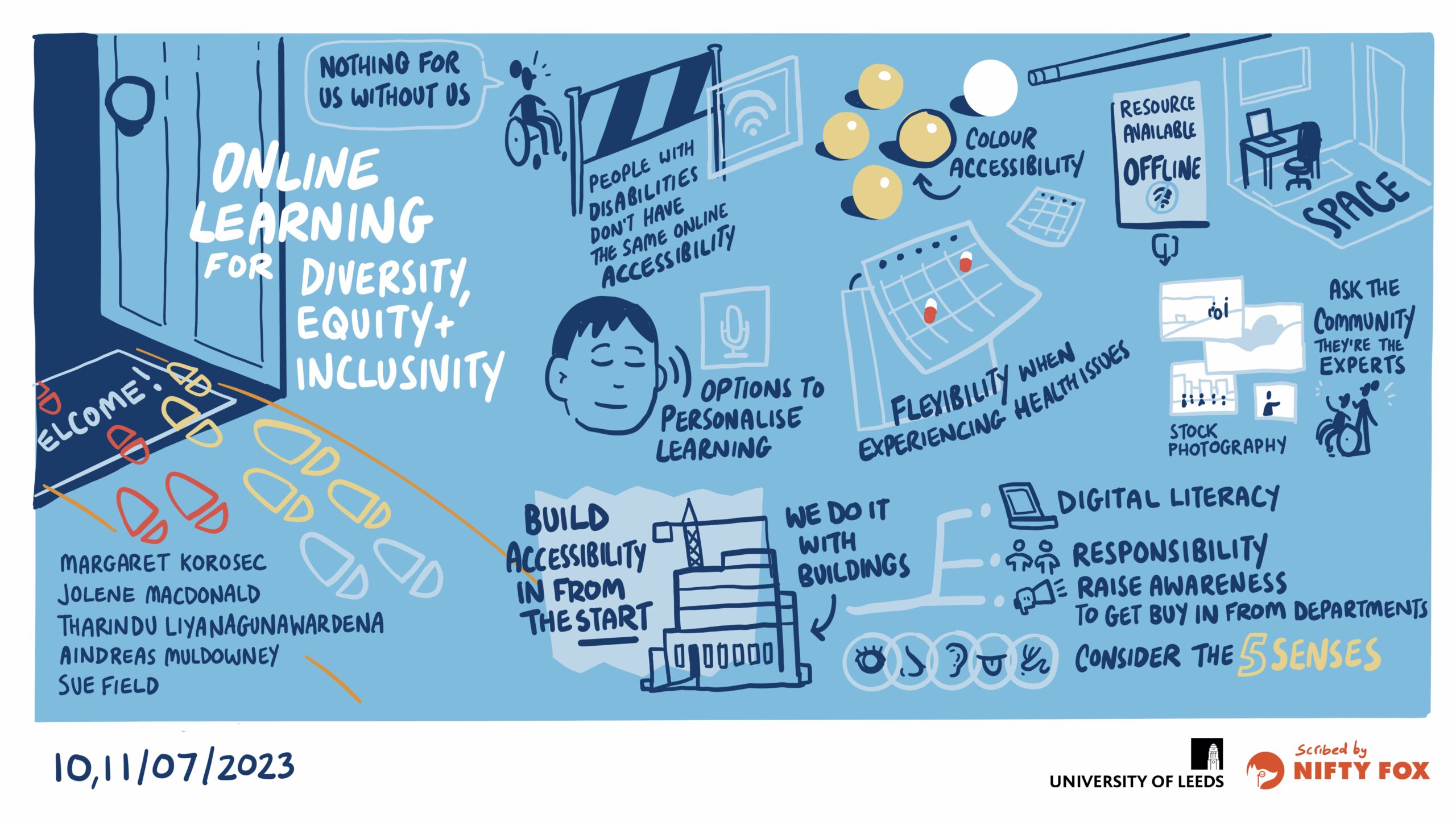If there was one key message I took from the accessibility sessions at #OLS23 it was that creating accessible online learning is a far broader issue than many online learning professionals tend to think.
We are all aware of the need to ensure accessible standards are adhered to in learning content, with video and audio materials needing appropriate alternatives and interpretations, and content in general needing to be compatible with screen-reading software. We are also probably aware of the legislation which applies to public bodies in the UK in this area, and the underlying social responsibility institutions have to ensure all who wish to can participate.
An offline alternative
But in Leeds we learned also about the importance of offering a good quality offline alternative to interactive online materials, because internet access itself can be a substantial barrier for many students both in affordability and reliability.
We found that flexibility in pathways through learning, including year-round enrolment and competency-based learning approaches, aren’t just selling points but solutions which can improve access.
And we established that personalised learning, harnessing the power of modularised content, is more than a marketing opportunity, but can actually mean the difference between students being able or unable to participate in online learning.
By bringing together a combination of students who had experienced access issues, accessibility experts, and those involved in both developing and delivering online learning, #OLS23 managed to set out the holistic nature of course accessibility in a way I’ve not seen before.
While most institutions have a sincere desire to meet the access needs of their students, too often under the inevitable deadline pressures such efforts have been reduced to box-ticking and rationalisation. It was good to be reminded that good accessibility is essentially a facet of fitness for purpose and quality assurance, and can and should be baked in to online learning, however and wherever is it being delivered.
Can structured semantic learning help?
Structured semantic learning content can contribute a great deal to an institution’s ability to deliver accessibility.
First of all, capturing the semantics and structure of your content from the start makes creating web content which meets accessibility guidelines much easier. You can, for example, impose a requirement for images to have descriptions and audio and video content to have transcripts, and those that are missing can be flagged up very clearly. You can add automated accessibility checks to your output routines to ensure the basics are covered.
You can also rapidly produce good quality print-ready PDFs or downloadable eBook formats of your content or chosen subsets of it, ensuring full offline access as required. You can mine the structure and semantics of your materials to build multiple pathways through the content, or even provide custom learning instances to meet individual students’ needs. And you can break down your content into modular elements to improve flexibility options and deliver competency-based learning.
Capture your pedagogy
Instead of building a course in your primary delivery environment and then trying to retrofit it to more accessible formats and delivery options, building your content as a separate repository that captures your pedagogy and teaching approach opens up powerful new opportunities to make your courses more accessible and more effective for all.
In the Designing and Improving Accessibility and Usability session at #OLS23, one member of the panel said:
“With online learning we have to build accessibility in from the start; after all, we do it with buildings, don’t we?”
Creating your online learning as structured and semantic content means building accessibility in from the start. Let’s do it.
What do we mean by structured semantic learning content?
- Building and cherishing your learning materials consistently in a way which captures both structure and meaning.
- Creating learning independent of your current delivery environment, focusing on your pedagogy not your VLE’s features.
- Using efficient publishing techniques to enable your content to be delivered rapidly into your current VLE, your next VLE, in print and in a range of other formats.
- Cleanly and seamlessly combining your unique intellectual property with publishers’ textbook content as required.
- Courseworker by CAPDM is based on structured semantic learning content.



